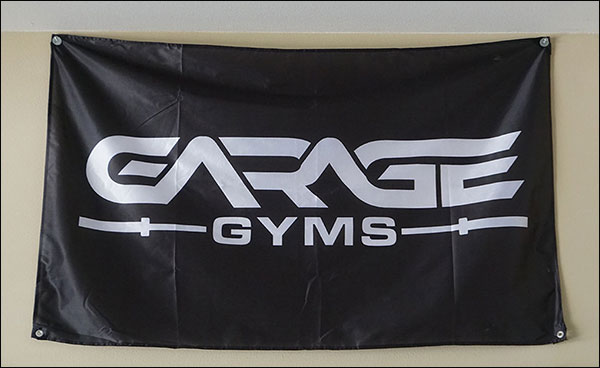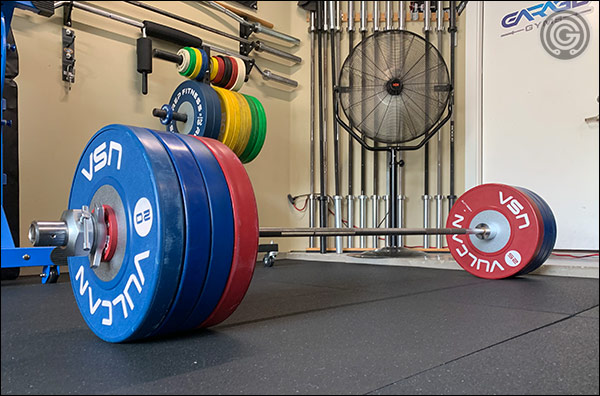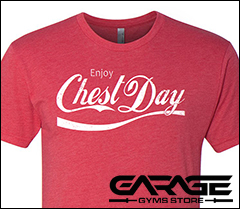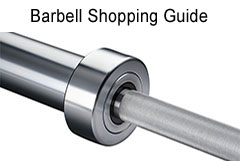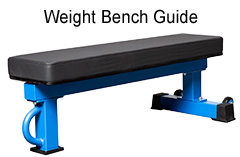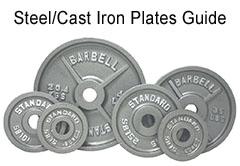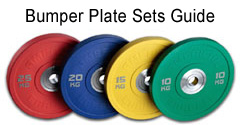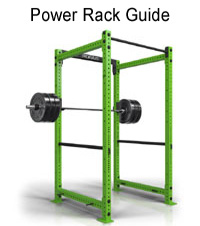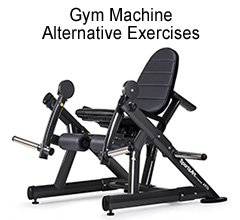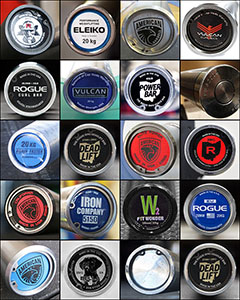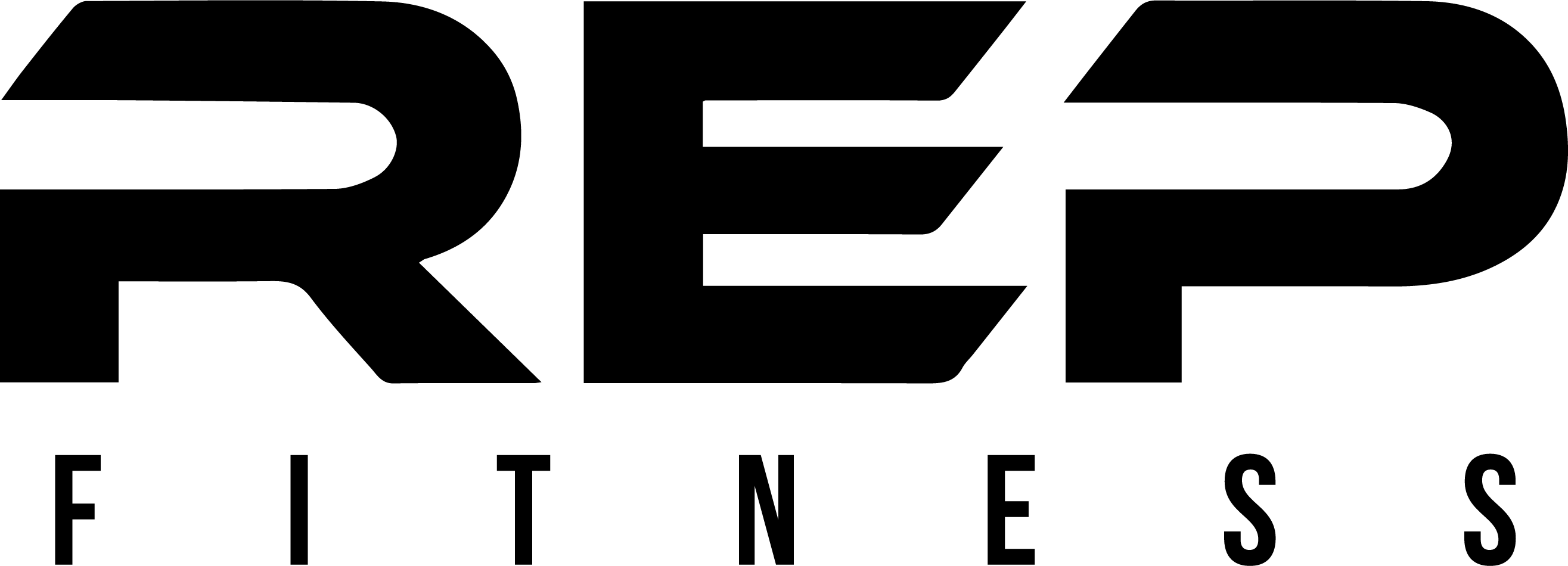It’s finally here! My review of the Buddy Capps Texas Deadlift Bar!
This review took a little longer to finish than I had originally planned. I tend to do so many barbell reviews that when a couple of non-barbell review opportunities came up (the Body Solid Leg Curl / Leg Extension and the Rep Fitness HR-5000), I jumped on them – putting this one on the back burner. For those of you who have been patiently waiting to read this review, I apologize for making you wait (but I thank you for hanging in there!)
That said, this review will follow my usual bar review format. The only real difference will be that the Texas Deadlift Bar (TDB) will frequently be compared to Rogue’s Ohio Deadlift Bar (ODB) throughout this review. My reasoning for this is simple; these two particular bars are the only two deadlift bars that folks truly care about, so why not just tackle the comparisons here rather than wait for the inevitable questions in the comments section.
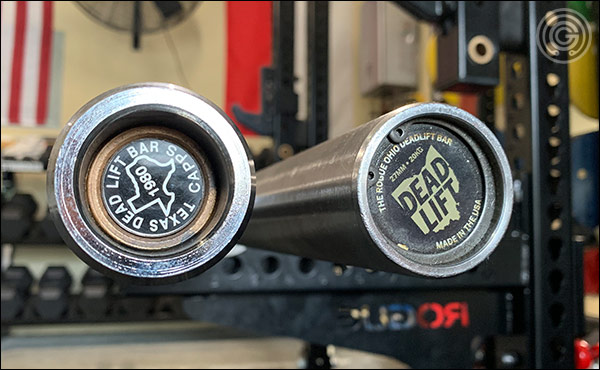
Texas Deadlift Bar Review – Table of Contents
- Deadlift Bar Overview
- Texas Deadlift Bar Specifications
- TDB Component Discussion – Sleeve Assembly & Rotation
- TDB Component Discussion – Knurling
- TDB Component Discussion – Finish Options
- Texas Deadlift Bar vs Ohio Deadlift Bar
- Texas Deadlift Bar Review Summary
The Deadlift Bar – An Overview
(this section won’t contain new or useful information for most of you – feel free to skip it.)
View this post on Instagram
The deadlift bar is a critical piece of equipment in serious powerlifting gyms. It is one of the few specialty bars that can (and frequently does) outright replace a standard power bar for a given lift (obviously the deadlift in this case); as opposed to bars like say the safety-squat bar or the Swiss bar that only supplement a standard power bar in training, not necessarily replace it. The deadlift bar is a high-value specialty bar because it offers advantages over a power bar, it gets used frequently (if not 100% of the time one deadlifts), and it is not overly expensive. So what are the advantages of a deadlift bar?
Deadlift Bars are longer and narrower than standard power bars; the purpose of this design being to give the bar more elasticity; more flex. Why would one want extra flex for a slow lift like the deadlift? Because having to pull slack out of the bar when beginning the pull allows you to complete a (small) portion of the lift before the plates have even broken the floor.
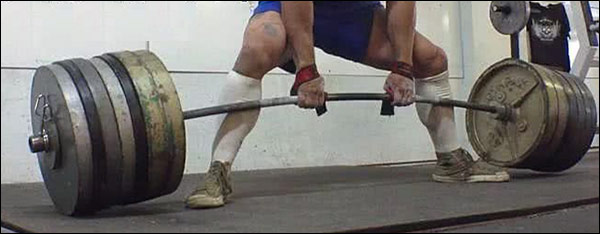
To put all that another way, as you begin a deadlift with a deadlift bar, the bar begins to rise before the weights, giving you a more gradual increase in weight with the opportunity to get some upward momentum before taking on the entire load. Standard, rigid power bars don’t offer this advantage simply because they display too little flex. As soon as you start the pull with a standard power bar you have taken on the entire load; there is no gradual increase in weight.
It should be noted that the advantage of the deadlift bar does not appear until you’re pulling heavy; I’d say in the 400-500-lb and up range. If you are a novice deadlifter with little weight on the bar, you do not need to run out and buy a deadlift bar. It should also be stated that a deadlift bar may allow you to get a couple percent extra off the floor, but you still need to be strong enough to finish the lift and lock it out.
Having said that, people really seem to like pulling with deadlift bars simply because of that narrow, 27 mm shaft and sharp, aggressive knurling. The 27 mm shaft alone makes a huge difference when compared to a 29 mm power bar. I personally feel like I have a much better grip on the bar; more control.
Extra elasticity or not, deadlift bars just feel better.
Buddy Capps Texas Deadlift Bar Specifications
- bar weight: 20 kg
- shaft diameter: 27 mm
- overall length: 91″
- shaft length: 56″
- sleeve length: 17.25″
- loadable sleeve length: 14.25″
- collar width: 2.75″
- outside collar to collar distance: 61.5″
- minimum tensile strength: 190,000 PSI
- knurl: aggressive
- center knurl: not present
- rotation: bronze bushings
- sleeve assembly: dual roll-pins with recessed end caps
- finish: customizable configuration
- shaft options: raw steel, black zinc, chrome
- sleeve options: raw steel, chrome
- elasticity: very high
- price: $305 to $385 (varies by finish)
Texas Deadlift Bar – Sleeve Assembly & Rotation
Capps uses a different method for attaching sleeves to the bar than the rest of the industry; a method called a dual roll-pin assembly.
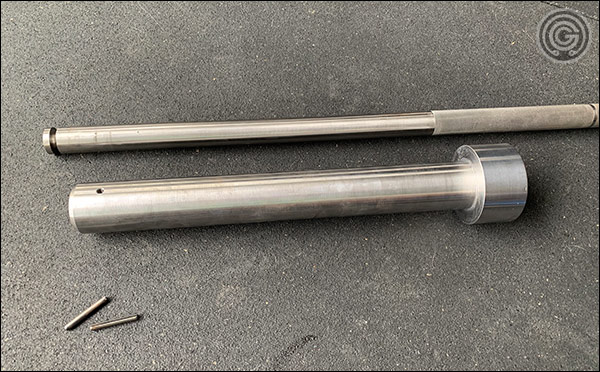
Rather than the standard snap ring that is inserted at the ends of the most manufacturers’s sleeves to prevent those sleeves from sliding off the shaft, the sleeves of a Capps bar have two holes drilled straight through that line up with a channel in the shaft. When the small roll pins are hammered into those holes and through that channel, the sleeve becomes secured on the shaft.
The roll-pin method makes for a very classy looking bar sleeve; especially in the case of the Capps bars, since they place those holes a little further down the sleeve than is necessary; giving the bar a recessed end rather than end caps that are mostly flush with the end of the bar.
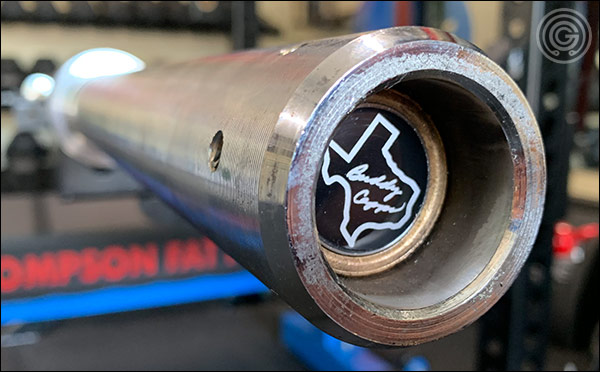
How does this assembly choice impact rotation versus standard snap-ring bars? It doesn’t. One method is just as good as the other when it comes to the smoothness and reliability of the sleeve’s rotation. I personally prefer Capp’s dual roll-pin method to the standard builds, as it is far more pleasing aesthetically. The Texas Bars are just super classy looking pieces of equipment; beautiful and functional.
Texas Deadlift Bar – Knurling
The knurling is aggressive; completely on par and likely completely the same as the Texas Power Bar. It’s a very appropriate level of coarseness and sharpness, and it is effective as needed for the bar’s intended application. Zero complaints about the knurling.
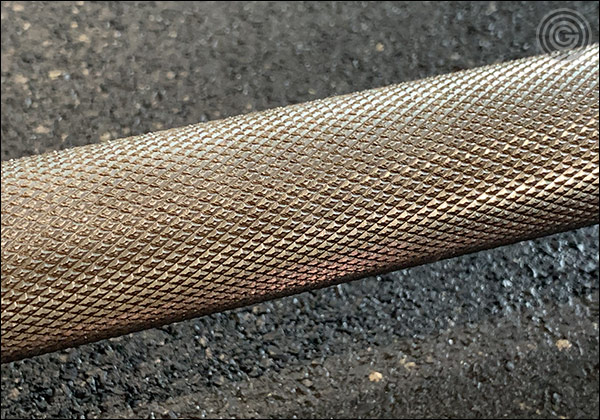
The Texas Deadlift Bar has no center knurling.
Ohio Knurl vs Texas Knurl
The Ohio Deadlift Bar is knurled all the way to the sleeves, while the Texas Deadlift Bar has knurl that stops about 8″ short of the sleeves. This could impact your ability to find knurl for snatch-grip deadlifts, but I dare say most aren’t going to care about this because if it’s really necessary, the standard power bar could be retrieved for such a lift.
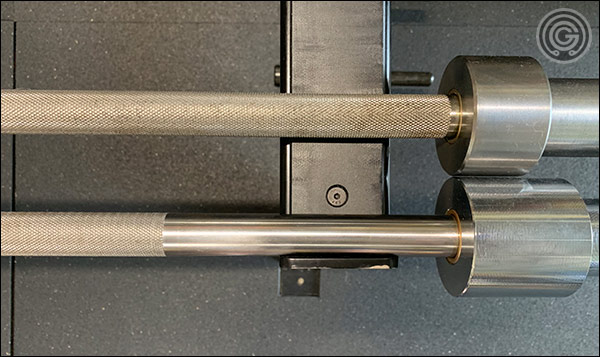
As far as the knurl pattern and aggressiveness, I find the Ohio knurling to be a little sharper than the Texas knurling. It’s not much, but it’s definitely noticeable (images further down the page in the comparison section). Personally I prefer the Ohio’s knurling, but I’ll discuss that more below.
Texas Deadlift Bar – Finish Options
The Texas Deadlift Bar is available in no less than six finish configurations. For the shaft we can choose from bare, unfinished steel, black zinc, and chrome. For the sleeves the options are bare steel and chrome.
The base TDB is completely bare steel and that sells for $305. Upgrade the shaft to a black zinc-finished shaft for $40, or to chrome for $65. You can upgrade the bare steel sleeves of any bar for $15.
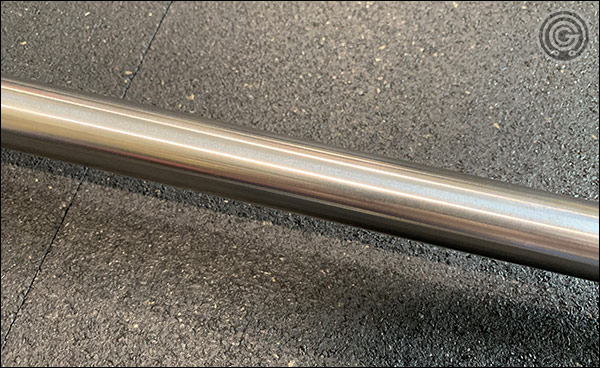
On my Texas Deadlift Bar I didn’t see any value in upgrading the shaft at all. I don’t care for chrome in most cases; especially when the alternative is raw steel; and I think black zinc is an abysmal finish. Just awful. I did however upgrade the sleeves to chrome for $15. I figure it’s one less thing to have to maintain and clean, and having chrome on the sleeves doesn’t impact performance like chrome on the shaft can (chrome shafts are slicker than raw steel.)
The knurl of the Texas Deadlift Bar negates a lot of the slickness of a chrome or black zinc shaft, at least compared to less aggressively knurled bars, so if you happen to like the look of black zinc or the oxidation protection qualities of chrome, don’t be afraid to upgrade that finish just because I didn’t.
Ohio Finishes vs Texas Finishes
The finish options is one of the areas in which Rogue and Capps differ. Capps offers up the ability to sort of customize your finish based on those three available options, Rogue on the other hand offers two default options; bare steel for $310, or black zinc shaft with bright zinc sleeves for $355; and a Cerakote option for $385 (four color choices).
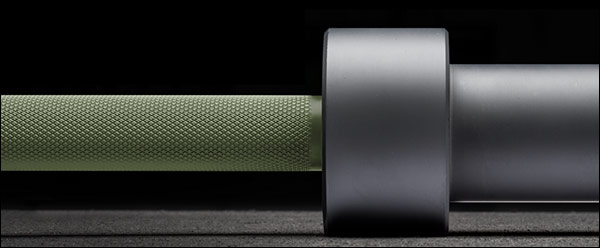
Capps doesn’t offer a Cerakote option, and Rogue doesn’t offer chrome, but if we consider that both of these finishes offer a comparable level of oxidation protection then we can say that both of these companies offer a bar with no protection, moderate protection, and more extreme protection. These two companies are pretty much on par with each other in terms of pricing as well; across the board.
Just my two cents, but if I were to go with the full protection finish, I’d prefer Cerakote over chrome. Cerakote just has a more tactile feel to it, and function trumps aesthetics.
So! Texas Deadlift Bar or Ohio Deadlift Bar?
So let us sum up the pros of each bar, because they both have features or ‘perks’ that the other does not, and these features are going to be important for helping you decide which bar to purchase.
Texas Deadlift Bar Pros
- More finish combinations (six total combinations)
- shaft options: bare steel, black zinc, and chrome
- sleeve options: bare steel and chrome
- slightly more flex than the Ohio
- dual roll-pins & recessed end cap assembly make for a very classy bar aesthetically
Ohio Deadlift Bar Pros
- narrower collars; more loadable sleeve length
- the ODB’s knurl has a little more bite to it
- available in Cerakote ceramic (four color options)
- knurled to the sleeves (snatch-grip deadlifts)
- clearly stated lifetime warranty
For more info, my full review of the Ohio Deadlift Bar can be found here.
So which of these two deadlift bars is the one to buy? Well to be honest this is actually sort of a tough call. They’re both great bars, and if you already own one of them you are unlikely to find enough of a reason to run out and replace it with the other. They are far more similar than they are different but of those small differences, one is probably going to appeal to you slightly more than the other – so that’ll probably be the one to get for you!
I own both of these deadlift bars so I don’t have to make the decision on which to buy, but if; for the sake of argument; I lost both of them to a fire (a dragon, I suppose!) and I had to buy only one deadlift bar again, I would likely favor the Ohio Deadlift Bar.
My preference for the Ohio Deadlift has almost everything to do with the longer sleeves. An extra inch per sleeve on a bar that already has shorter sleeves than a typical power bar can make quite a bit of difference for the typical garage gym owner; who is probably using either bumper plates or classic cast iron plates for their pulls (as opposed to the thinner, calibrated powerlifting discs.) You can simply get more weight on the Ohio than you can on the Texas.
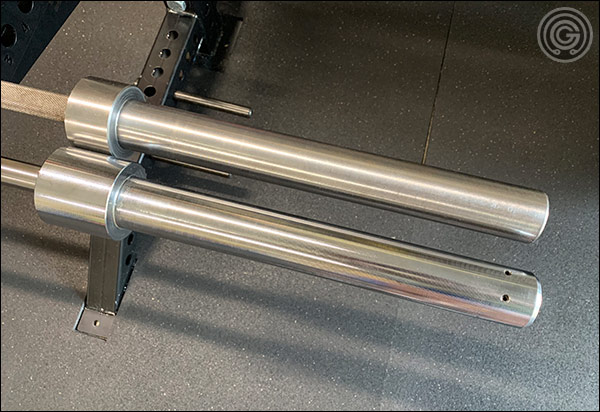
Although only a fairly subtle difference, I also happen to like the knurl on the Ohio a little bit more. That being said, if the Texas Deadlift had longer sleeves than the Ohio or some other major advantage over the Ohio Deadlift, I’d ignore this minor knurl difference with no issue.
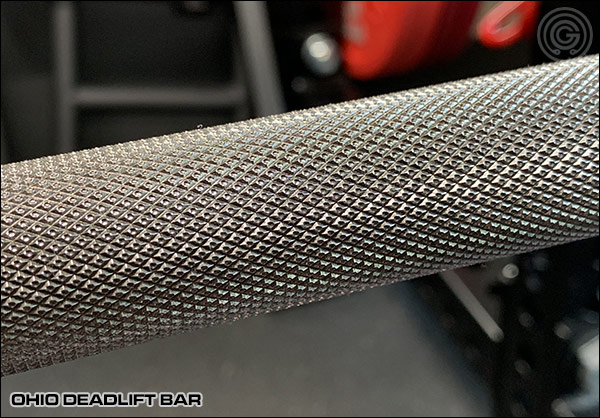
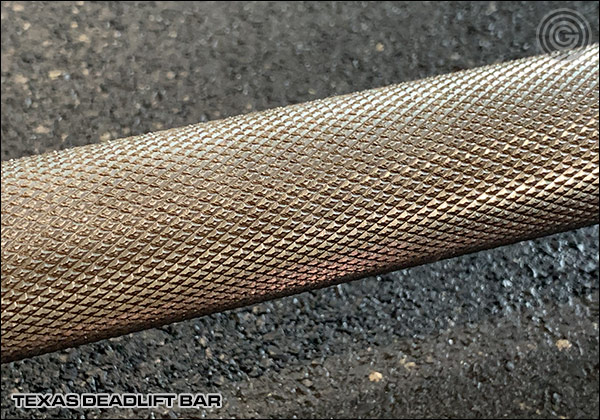
Price-wise, the differences are negligible. $305 vs $310 for the bare steel variants, $385 for full chrome from Capps and $385 for full Cerakote from Rogue. It’s a wash in terms of price. Both of these bars are bushing bars, they have the same tensile strength, same weight and same shaft diameter, and they both sound like a train wreck when dropped. It really is just a matter of sorting the pros of each and deciding which one makes you happier. Do you want Cerakote or chrome? Do you need the longer loadable sleeve length? Do you just care how the bar looks? Do you care if the bar is knurled all the way to the sleeves? and so forth.
At the end of the day, you can’t go wrong with either of these bars. My Ohio preference can be your Capps preference, and neither of us are wrong. There are a number of completely valid reasons to like one over the other because really, when it comes down to it, these two bars are (again) far more similar than they are different.
Buddy Capps Texas Deadlift Bar – Review Summary
I like the Texas Deadlift Bar. All of the specifications are exactly where they should be (the tensile strength, shaft diameter, and length), I’m not worried that it won’t last a lifetime, it’s a super attractive bar, and the prices are competitive. There are no red flags to be found, and if I had any complaint at all it would be regarding the relatively short sleeve length; an issue that exists only because there happens to be an alternative with longer sleeves.
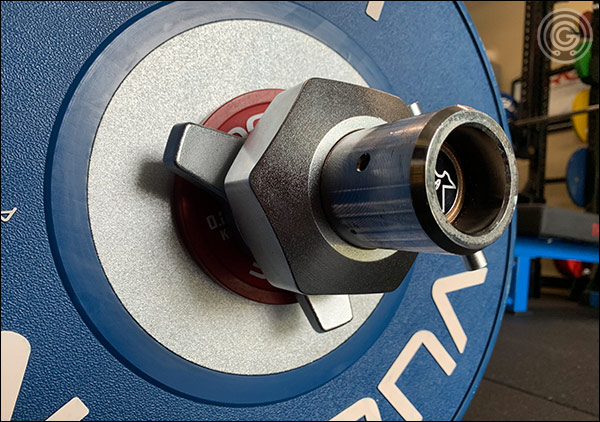
Buddy puts out a great product. The Texas Power Bar is a classic, and still one of the better low-cost, high-performance options for a power bar . The Texas Deadlift Bar is basically just a longer, narrower Texas Power Bar, so how bad could it be? That’s right, not bad!
I have zero issues recommending the Texas Deadlift Bar. Of course I have zero issues with recommending the Ohio Deadlift Bar either. Weigh the pros and features of each, decide on a finish, then get to deadlifting. You can’t go wrong no matter which you choose.
